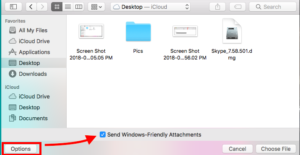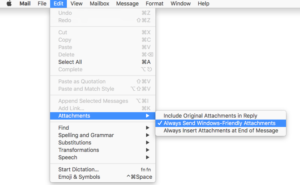BLOG
5 Common Interview Mistakes and How to Avoid Them
Posted by Dianne Hartwick in Interviews, leadership, Organization, Preparedness, Recent work, Self Improvement, Skills, Uncategorized | 0 comments
#1 Dressing inappropriately
Although it may seem superficial, first impressions are paramount when going for an interview and a significant part of that impression is your appearance. When going to an interview, you should always aim to dress to impress. No matter how casual you believe a company’s dress code to be, it is always better to be overdressed than underdressed.
How to avoid this faux pas:
Always keep a few business casual pieces in your closet, you never know when a job opportunity could present itself.
#2 Badmouthing your employer
While issues with your past employers may be the reasoning behind a desire to change positions, it is in bad form to bring them up during an interview. Critiquing your past employer may show to the interviewer that you have a lack of professionalism and tact. There is also the risk that they are acquainted with your past employers. Finally, they could be led to believe that you would be quick to say poor things about their company should you leave on bad terms.
How to avoid this faux pas:
Avoid talking about your past employers in a negative light. If asked why you left your most recent position, make the decision more about a personal desire for a change or a belief that you were no longer a fit for their company’s direction or values.
#3 Not knowing anything about the company
When going for an interview, research is key! Always come prepared to not only answer questions about yourself but about the company for which you are interviewing. In the age of the internet, it is so easy to find out about a company’s history, goals and even about the position you desire to hold. There is no excuse for not being prepared!
How to avoid this faux pas:
A quick google search before the interview can pull up the company’s website and social media pages. Familiarize yourself with the company’s history and potentially their most recently publicized successes.
#4 Your resume is questionable
During an interview, you will most certainly be asked about your job history and your listed skills and accomplishments. If the dates of your past jobs do not line up or if you cannot provide evidence of a certain skill, this may lead the interviewer to become suspicious of your character.
How to avoid this faux pas:
Make sure that the information is up to date! You don’t want a small mistake on a resume to keep you from getting your dream job. If your job experience is lacking, don’t lie about it, instead think of transferable skills that you possess which can be used in the position you are interviewing for.
#5 Not asking questions
Although the main point of an interview is for the interviewer to get to know you, you must also make an effort to get to know your potential future employer. When interviewing for a position, you need to be sure that the company and the position will be a good fit for you and that your values and expectations align. Not asking any questions may lead the interviewer to believe you don’t care or that you are not all that interested in the position.
How to avoid this faux pas:
Prepare questions to ask the interviewer before the interview begins. These should be specific to the company and should not be questions like “when would I start?” or “How much money will I make?”.
Spruce up for spring: 3 easy ways to organize your office space
Posted by Dianne Hartwick in Organization, Preparedness, Self Improvement | 0 comments
Get to enjoy the summer sunshine to the fullest by getting your ducks in a row this spring! Declutter your office space, one area at a time with these 3 simple tips.
#1 Tidy your desk!
Throw away or recycle old bottles, coffee cups, and other junk that is just taking up unnecessary space. This will instantly make your desk appear cleaner and make finding what you need a whole lot less stressful. Next, organize your papers into to be filed, shredded and recycled piles. Lastly, put everything back in its rightful place and you’ll be back to a clutter free work space.
#2 Put together an organization wall!
Need more desk space? Hang items like a whiteboard calendar, bulletin board and hangable file racks above your work space! Not only will this declutter your desk, but it will also allow for your most important notes, papers and meeting dates to be directly in your line of sight!
#3 Order your drawers!
Ever struggle to find your favourite pen or that one important file? Invest in some small boxes, file folders and labels to keep everything in its place. Move small change into a change purse and scraps of paper and garbage into the trash bin. The small things often contribute in large ways to the mess.
Annnd you’re finished! Now you can enjoy an office environment that detracts rather than adds to the stress of your work day!
The 3 Most Useful Leadership Tactics for Introverts
Posted by Dianne Hartwick in Introversion, Introvert, leadership, Networking, Preparedness, Self Improvement, Skills, strengths | 0 comments
A common misconception is that introverts are too reserved to be in leadership roles; leaders are often thought to be those whose voices and opinions are shared loudly for all to hear. But in fact, there are several important qualities that make introverts the best candidates to lead others. Their ability to process their ideas before sharing them, their exemplary listening skills and their inclination to always be prepared give them a strong base of potential with which to attain positions of power.
Tactic #1: Do your research
As an introvert, you may struggle with feelings of awkwardness in social situations. In order to avoid any uncomfortableness, take 5-10 minutes to prepare conversation topics before any event, meeting or other significant social situation. Ask yourself, “How can I start a meaningful/interesting conversation?” Try to draw on current topics in the news or safe subjects that most people like talking about (ie. avoid topics like politics or religion). This allows you to take charge of the conversation; effectively displaying your confidence and ability to lead.
Tactic #2: Reflect before you act
As an introvert, it may already come naturally to you to think over your ideas before sharing them with others. This ability to think before you act makes you a more attractive and successful leader when compared to certain extroverts who often blurt out the first things that come to mind. Keep in mind that the key is to not sit back and passively let others take action but to follow through with your ideas with a strong purpose.
Tactic #3: Listen and be understanding
The introvert’s ability to self-reflect makes them more capable of empathy when it comes to others problems. Introverts in leadership roles are more willing to look beyond the surface level mistakes of their employees in order to to uncover the underlying root causes. This allows them to resolve issues without jumping to conclusions; avoiding the creation of toxic work environments and earning the respect and trust of their staff.







